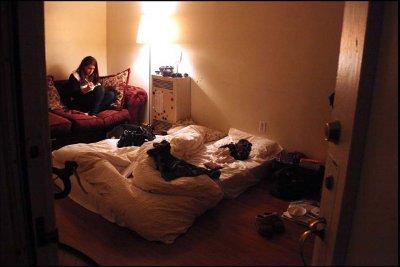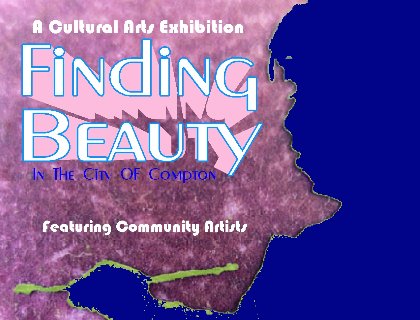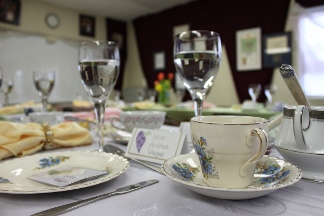The Los Angeles County Board of Supervisors voted 3-2 today to join the city’s economic boycott of Arizona in response to the state’s law targeting illegal immigration. Supervisor Gloria Molina introduced the idea, stating that the SB 1070 law “violates core American civil rights and civil liberties’’ and “goes too far and should be strongly condemned and universally rejected.’’ New contracts with Arizona-based companies will be banned, and a review will be initiated to determine which contracts should be canceled. The county had more than $26 million in contracts this year with Arizona companies, according to county spokeswoman Judy Hammond.
The Los Angeles City Council approved an economic boycott of Arizona three weeks ago. The Los Angeles Unified School District was also scheduled to vote on the boycott today.









 A strange project is underway and I’m still not sure how I feel about it.
A strange project is underway and I’m still not sure how I feel about it. The entrance hallway at the
The entrance hallway at the  In an effort to bring to the fore the artistic side of the Hub City, Compton artist Amanda Ferrell is organizing a local arts festival. Anyone above 16 years old can apply by emailing Ferrell at
In an effort to bring to the fore the artistic side of the Hub City, Compton artist Amanda Ferrell is organizing a local arts festival. Anyone above 16 years old can apply by emailing Ferrell at  At Trinity Elementary School in Southeast Los Angeles, a group of fifth-grade girls donning wide-brimmed hats sat down for a spot of afternoon tea.
At Trinity Elementary School in Southeast Los Angeles, a group of fifth-grade girls donning wide-brimmed hats sat down for a spot of afternoon tea. Sociologists have highlighted a worrying trend in young, middle-class Americans, which many attribute simply to a upsurge in “optimism.” They have “much higher material expectations than previous generations,” writes Peck, after being told by their parents that they are “special,” can do anything they want and be anyone they want to be. This also makes it harder for “Generation Y” (as they have been termed) to cope with the qualities required by today’s job market, including “perseverance, adaptability, humility and entrepreneurialsm.” These young people, apparently, are likely to turn down jobs that they don’t feel are good enough, even if they have no other options.
Sociologists have highlighted a worrying trend in young, middle-class Americans, which many attribute simply to a upsurge in “optimism.” They have “much higher material expectations than previous generations,” writes Peck, after being told by their parents that they are “special,” can do anything they want and be anyone they want to be. This also makes it harder for “Generation Y” (as they have been termed) to cope with the qualities required by today’s job market, including “perseverance, adaptability, humility and entrepreneurialsm.” These young people, apparently, are likely to turn down jobs that they don’t feel are good enough, even if they have no other options.  3. Get smart: Race: Are We So Different? This exhibit at the California Science Center, Exposition Park, explores the science behind race.
3. Get smart: Race: Are We So Different? This exhibit at the California Science Center, Exposition Park, explores the science behind race. 




